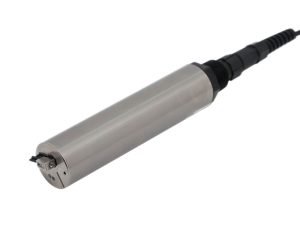Chlorophyll Sensors in Agriculture: Enhancing Crop Monitoring and Yield Prediction

In recent years, technology has made incredible strides in transforming agriculture, helping farmers meet the increasing global demand for food while minimizing environmental impact. One of the most impactful innovations in precision agriculture is the use of chlorophyll sensor—tools that provide farmers with real-time, accurate data about the health and condition of their crops.
Chlorophyll, the green pigment in plant leaves, is a critical component of photosynthesis—the process by which plants convert sunlight into energy. The amount of chlorophyll in a plant directly correlates to its health and ability to produce food. Chlorophyll sensors measure this pigment and provide valuable insights into the crop’s vitality, which can greatly enhance crop monitoring and yield prediction.
In this blog, we’ll explore how chlorophyll sensors are reshaping crop monitoring and how they play a crucial role in predicting crop yields, improving efficiency, and boosting sustainability in modern farming.
What Are Chlorophyll Sensors?
Chlorophyll sensors are devices designed to measure the chlorophyll content in the leaves of plants. These sensors operate by emitting light at specific wavelengths and detecting how much light is absorbed or reflected by the plant. Chlorophyll absorbs light in the blue and red parts of the spectrum and reflects green light, which is why plants appear green. By analyzing the light absorption and reflection, chlorophyll sensors estimate the amount of chlorophyll present, offering a direct measure of the plant’s health and photosynthetic activity.
These sensors can be used in a variety of ways: handheld devices, mounted on drones or tractors, or embedded in satellite systems for large-scale crop monitoring. The ability to assess chlorophyll content without the need for physical sampling makes these sensors a non-invasive and efficient tool for farmers.
How Chlorophyll Sensors Enhance Crop Monitoring
Monitoring crop health is critical to achieving high yields and minimizing resource use in agriculture. Chlorophyll sensors offer a more precise and actionable way to monitor the overall health of plants. Here’s how they enhance crop monitoring:
1. Early Detection of Stress
Chlorophyll sensors help detect early signs of stress in plants caused by factors such as drought, pest infestations, diseases, or nutrient deficiencies. When plants experience stress, their chlorophyll levels drop, signaling that they may be struggling to photosynthesize effectively.
By detecting these changes in chlorophyll levels at an early stage, farmers can take action before the stress becomes severe, potentially preventing crop damage and yield loss. For example, a sudden drop in chlorophyll levels might indicate that a crop is suffering from water stress, prompting the farmer to adjust irrigation schedules. Similarly, a decrease in chlorophyll can also signal nutrient deficiencies, allowing farmers to apply the necessary fertilizers before the problem worsens.
Early detection is a game-changer for farmers, as it enables them to respond quickly and minimize the impact of environmental challenges.
2. Monitoring Plant Growth and Development
As plants grow, their chlorophyll levels typically increase, reflecting their improving ability to photosynthesize. Chlorophyll sensors can track these changes in chlorophyll concentration to assess the development of crops throughout the growing season.
By consistently monitoring chlorophyll levels, farmers can gain a better understanding of how crops are progressing and whether they are reaching their full growth potential. For example, if a crop is lagging behind in growth compared to other areas of the field, chlorophyll sensor can provide data to identify potential issues, such as poor soil quality or inadequate irrigation.
This data allows farmers to adjust their management practices and optimize growing conditions to maximize crop yield and health.
3. Precision Fertilization
Chlorophyll sensors also play a critical role in precision fertilization. Nitrogen is an essential nutrient for chlorophyll production, and its availability can directly impact the chlorophyll levels in plants. If a plant lacks sufficient nitrogen, its chlorophyll levels will decrease, and its ability to photosynthesize effectively will be impaired.
With chlorophyll sensors, farmers can monitor the nitrogen status of their crops and apply fertilizers precisely where needed, rather than applying them uniformly across the entire field. This not only ensures that crops receive the nutrients they need but also reduces the waste and environmental impact associated with over-fertilization.
Precision fertilization helps farmers save on input costs while enhancing crop productivity and sustainability.
Chlorophyll Sensors and Yield Prediction
Accurately predicting crop yields is essential for farmers, agronomists, and food producers to plan effectively for the future. Chlorophyll sensors play a key role in improving yield predictions by providing real-time data on plant health and photosynthetic activity. Here’s how they contribute to better yield forecasting:
1. Correlating Chlorophyll Content with Yield Potential
Research has shown that there is a strong correlation between chlorophyll content and crop yield. Plants with higher chlorophyll levels are typically healthier and more productive, as they are better equipped to perform photosynthesis. By continuously monitoring chlorophyll levels with sensors, farmers can gain insights into the potential yield of their crops.
For example, if a farmer observes consistent high chlorophyll levels across the field, it suggests that the plants are in good health and have a strong photosynthetic capacity. This, in turn, could indicate that the crop is likely to produce a high yield. Conversely, lower chlorophyll levels might suggest that the crop is underperforming, which could result in a reduced yield.
2. Real-Time Monitoring for Dynamic Predictions
Chlorophyll sensors provide farmers with real-time data on crop health, allowing them to adjust their predictions as conditions change. Instead of relying on static, seasonal yield forecasts, farmers can use chlorophyll sensor data to update their yield predictions continuously throughout the growing season.
For example, if a field is experiencing unexpected water stress or nutrient deficiency, chlorophyll sensors can identify these changes early, and farmers can adjust their predictions accordingly. This dynamic approach to yield prediction allows for more accurate forecasting and helps farmers plan for harvest, storage, and distribution more effectively.
3. Field-Level Yield Forecasting
Chlorophyll sensors are not only useful for predicting overall crop yields but also for estimating yields at a field level. By deploying sensors across different areas of a field, farmers can identify variations in chlorophyll content, which might indicate that certain areas of the field are underperforming.
With this granular data, farmers can make more localized yield predictions and take targeted actions to address issues in specific parts of the field. This localized approach to yield forecasting helps optimize harvest timing, logistics, and resource allocation, ensuring that farmers can harvest crops at their peak and minimize losses.
The Future of Chlorophyll Sensors in Agriculture
The potential of chlorophyll sensors in agriculture is still being realized, and the future holds exciting possibilities. Here are some developments to look out for:
-
Integration with Other Sensors and Technologies: Chlorophyll sensors can be combined with other technologies, such as soil moisture sensors, weather stations, and satellite imagery, to provide a comprehensive view of field conditions. By integrating data from multiple sources, farmers can make even more informed decisions about crop management and yield prediction.
-
AI-Powered Data Analysis: The data collected by chlorophyll sensors can be analyzed using artificial intelligence (AI) and machine learning algorithms to generate predictive insights. This will enable farmers to anticipate potential problems, optimize inputs, and make more accurate yield predictions.
-
Affordable and Accessible Technology: As the cost of sensor technology decreases, chlorophyll sensors will become more accessible to farmers of all sizes. Smallholder farmers will be able to take advantage of this technology, improving crop monitoring and yield prediction on a global scale.
-
Global Scale Monitoring: Chlorophyll sensors integrated into satellites or drones can enable large-scale monitoring of crops across regions or even countries. This will help organizations and governments better track food production, identify potential supply chain disruptions, and improve food security.
Conclusion
Chlorophyll sensors are revolutionizing crop monitoring and yield prediction in agriculture. By providing real-time, precise data on plant health and photosynthetic activity, these sensors enable farmers to detect early signs of stress, optimize fertilization and irrigation practices, and make more accurate yield predictions. This data-driven approach to agriculture not only boosts efficiency and productivity but also contributes to the sustainability of farming practices.
As technology continues to advance, chlorophyll sensors will play an increasingly important role in shaping the future of agriculture. With their ability to improve decision-making and enhance crop monitoring, chlorophyll sensors are helping farmers meet the challenges of feeding a growing global population while minimizing environmental impact.




